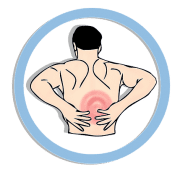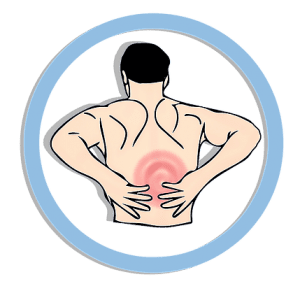How Stress Leads to Pain
How Stress Leads to Pain
People are dealing with more stress than ever right now and it’s impacting people in different ways. Many folks I speak with have been experiencing a rollercoaster of emotions — and their bodies are reflecting that. Keep reading to learn how stress leads to pain.
Stress impacts everything from your gut, to your immune system, to your mental health, to your musculoskeletal system.
When it comes to musculoskeletal pain – common areas in your body that easily get impacted include your shoulders, jaw, head, and lower back.
Stress is your human response to physical, emotional, or mental changes in your body or living environment.
According to internal medicine physician Richard Lang, MD, PhD from the Cleveland Clinic: “Stress doesn’t necessarily cause certain conditions, but it can make the symptoms of those conditions worse.” It’s easy to fall into a vicious cycle. Your physical symptoms worsen. Your stress increases – and so on and so on.
We know without a doubt that stress impacts our bodies – but exactly how or why this happens is an interesting phenomenon that is still being researched.
But for now – here are some of the working theories on how stress leads to physical pain.
Social conditioning
Many of us are taught from a young age that expressing emotions, particularly negative emotions, is “bad” or “unacceptable.” The result is that you may have learned to hold stress inside your body when faced with a stressful situation. Researchers who study this believe that the muscle tension we develop is the result of “unspoken social beliefs” that we adopted as children in order to feel accepted or liked. This pattern carries into adulthood and becomes embedded into our subconscious systems, i.e. our nervous system. Later on, when faced with any type of stress, our muscles react based on how we’ve taught them. If you grew up learning to bury emotions and tension somewhere in your body as a response to stress, it’s easy to continue that pattern into adulthood.
Trauma
When we think of trauma – we often associate it with one big event or injury. Like an accident, major fall, or perhaps a violent crime or incident. This type of trauma typically results in obvious physical damage such as broken bones, bruises, or soft tissue and organ injuries. But trauma can also be more emotional in nature and less obvious. Emotional “micro-traumas” typically occur over the course of a lifetime and go unrealized for years. And regardless of the type of trauma or its perceived severity, your body reacts and “remembers” the emotional impact. But these memories are rarely conscious. Similar to what happens with social conditioning, if you’re faced with a stressful situation later in life that reminds your brain of a previous trauma, your body may still react like it did when the actual trauma occurred, except you won’t consciously know it.
For some folks, until they’re able to associate their physical symptoms with the deep, often emotional trauma that happened much earlier in life. They may continue to suffer or worse, resort to lifelong medications to manage their pain. Have you suffered from chronic pain and been told there is no “logical” evidence or reason for it? It’s possible it could be related to undiagnosed trauma. Find a therapist (psychology today is a great resource) who’s been specifically trained in this to help you.
Environmental Stressors and Habits
Your environment and daily habits can have a huge impact on how your body feels from day to day. They can also influence both physical and emotional stress. For example, if you’ve been reading my articles for awhile, you know that sitting too much is a number one cause of back and neck pain. Sitting too much could be the result of your job – or stress.
When you’re stressed, you tend to be less motivated and you may opt for unhealthy coping mechanisms, such as more TV and more couch time. You’ll be less reluctant to exercise or go for a walk. How you set up your environment can play a big role in combating stress at home. If you’re working from home – choose a set up where you can stand at your computer for part of the day. Reduce the physical stress that sitting has on your body. Get the TV out of your bedroom. You’re more likely to get a good night’s sleep and less likely to turn the news on first thing in the morning. This can be a source of stress in and of itself. The take home point is that life is hard enough. So set yourself up for success by creating an environment that encourages good daily habits.
Regardless of how or why stress impacts your body, there is one thing I know for certain, movement helps.
Start there and see what happens. Regular, every day movement helps you both physically and mentally and I have yet to see any negative consequences from a daily movement or exercise habit. If musculoskeletal pain is currently keeping you from daily movement – then talk to an expert who can help.
Request to talk to one of my specialists to see if we would be the right fit to help you get out of pain. CLICK HERE to request a Free Discovery visit with one of my specialists.
Dr. Carrie Jose, Physical Therapist and Pilates expert, owns CJ Physical Therapy & Pilates in Portsmouth and writes for Seacoast Media Group. To get in touch, or request a free copy of one of her guides to back, neck, knee, or shoulder pain, email her at [email protected].







